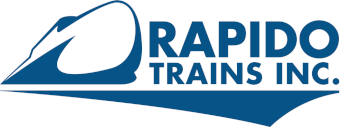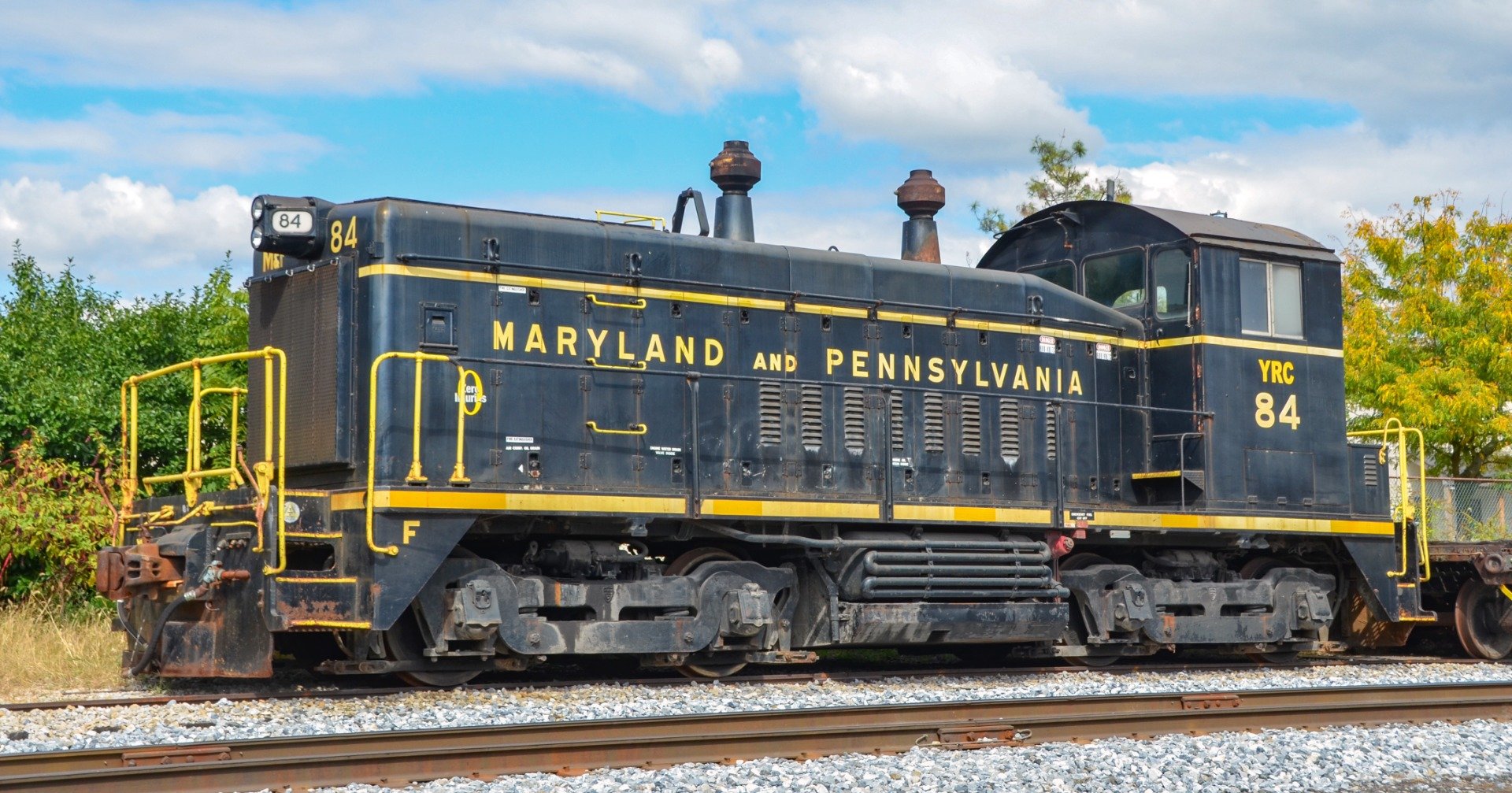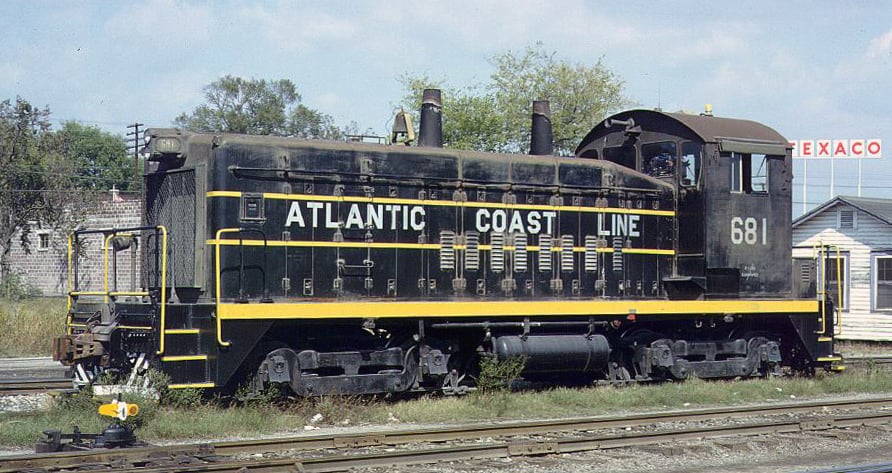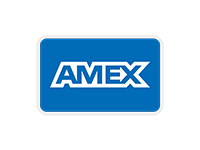EMD’s SW9 Switcher
by Craig Walker
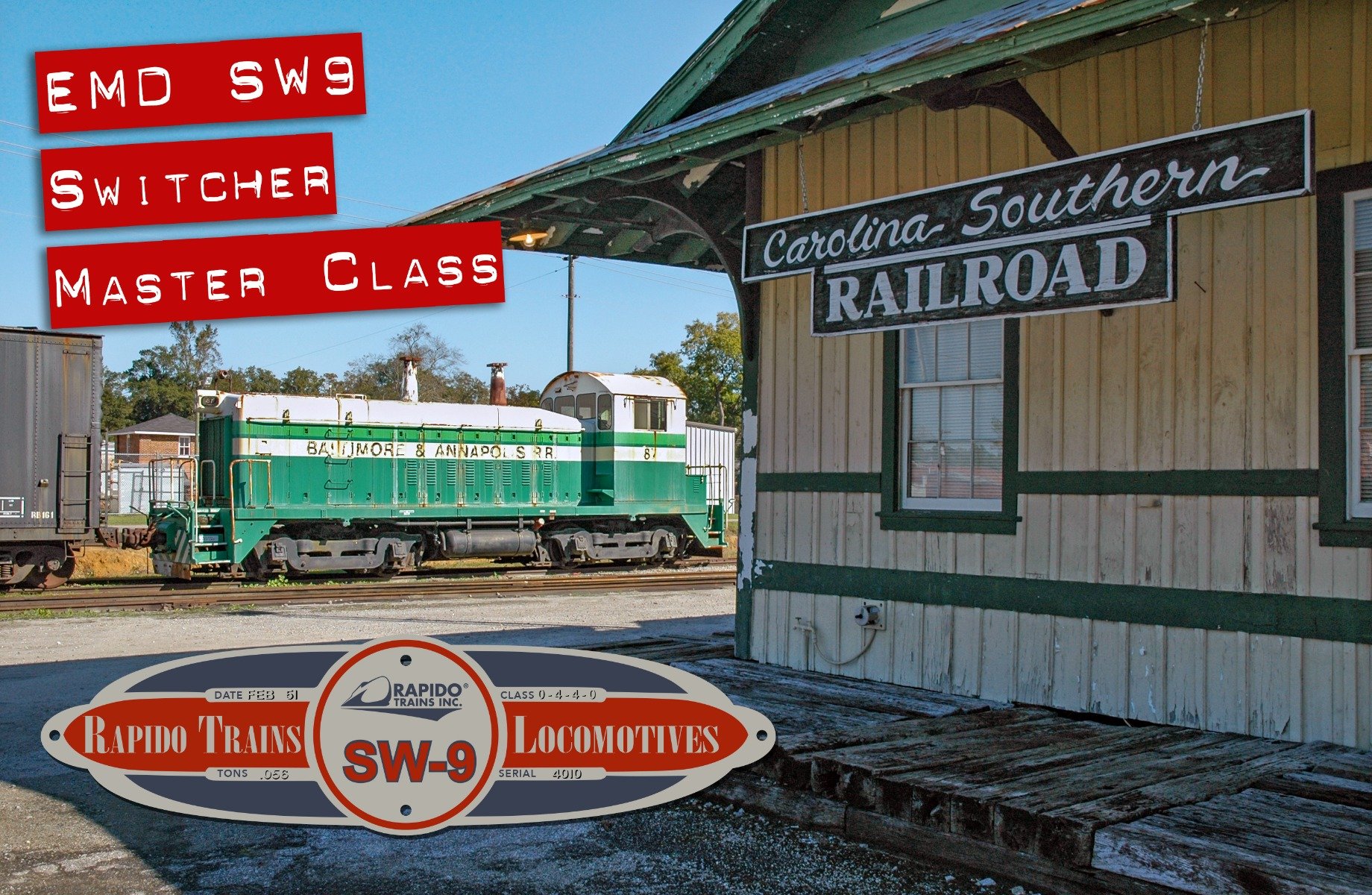
EMD Continues the Quest for Better Switchers
The Electro-Motive Corporation (EMC), which became General Motors’ Electro-Motive Division (EMD) in 1941, created a very successful line of end-cab diesel-electric switcher locomotives. And, as with any product, improvements were continually being made. With their diesel-electric locomotives, that also necessitated model designation changes, particularly as horsepower increased thanks to engineering upgrades.
And so it was with EMC and EMD’s end-cab switchers: 1935’s 600 horsepower SC (and SW) begat the 900 hp NC- and NW-series diesels, which led to the 1,000 hp NW2, NW5 and SW1000, which morphed into 1,200 hp SW7, SW9 and SW1200, which then evolved into the 1,500 hp SW1500. (And along the way, some lower horsepower switchers were built during this time as well, not a step back but an option for those railroads and industries desiring a lower horsepower locomotive, such as the 600 hp SW1 and SW600, the 800 hp SW8 and the 900 hp SW900.)
Well, hold on a second … we kind of jumped ahead here, as our subject in the SW9. So, look at this pocket watch we are swinging … You’re feeling sleepy … Sleepy … And ignore all those higher horsepower later switchers! They never existed. And when we snap our fingers, you’ll forget all about those diesels. 1 … 2 … 3 … *snap!*
In November 1950, EMD introduced the pinnacle of diesel-electric end-cab switcher locomotives, never to be improved upon, the SW9! That first SW9 built was a single locomotive order for Chattanooga Traction Company. An order for one locomotive! EMD’s Sales Department must’ve been popping the champaign corks over this! Well, sure ... that was a modest start. But fortunately for EMD (and, if commissioned, their Sales Team) The SW9 was a success, with 808 locomotives built (778 built in their McCook, Illinois, factory and 30 in their London, Ontario (Canada, in case you didn’t know).
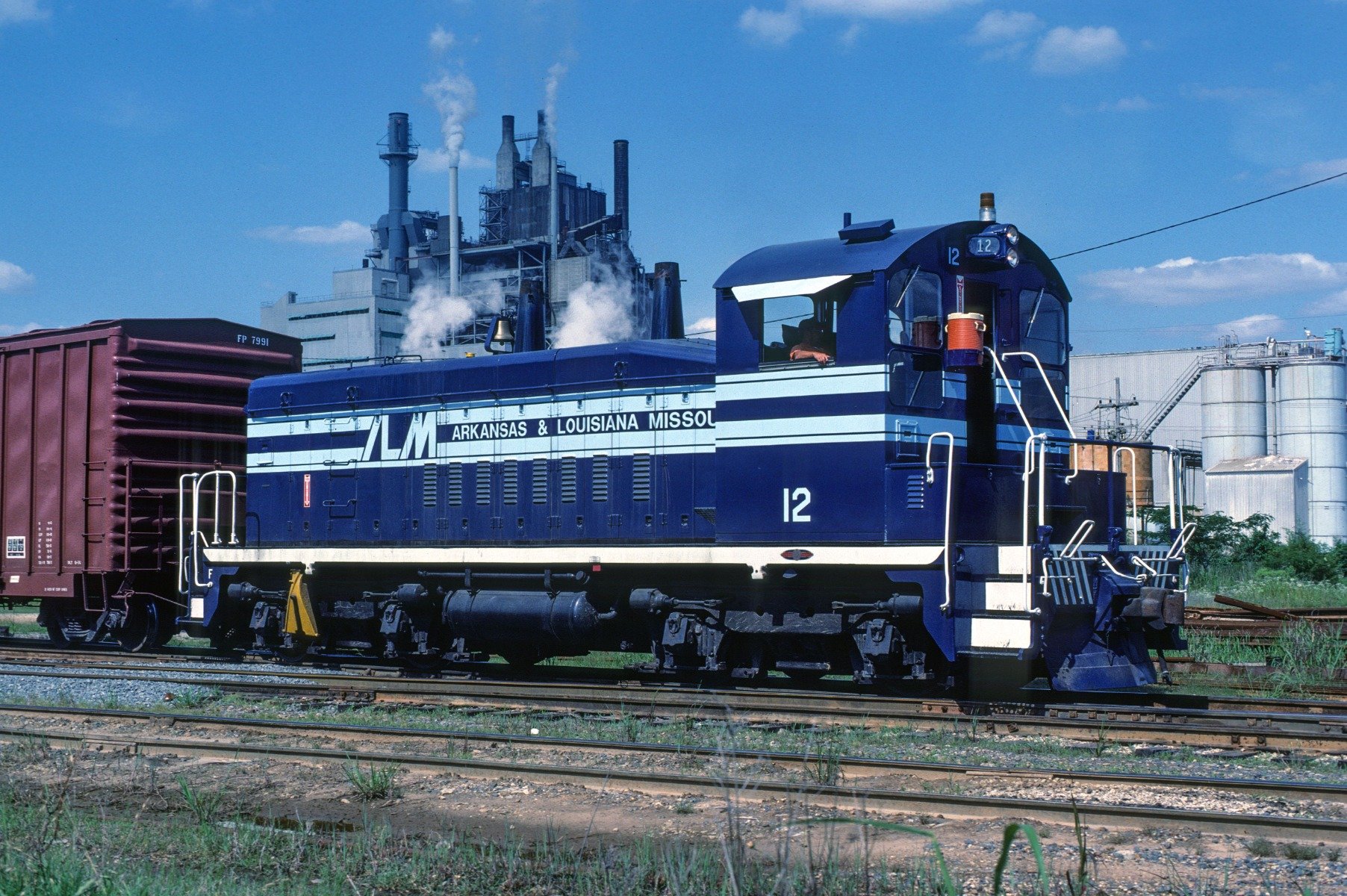
Along with a wide variety of Class I railroads, many shortlines and some industries also acquired SW9s. Here we see Arkansas, Louisiana & Missouri’s one and only SW9, number 12, shunting cars in Bastrop, LA, in 1983.
Douglas G. Walker photograph
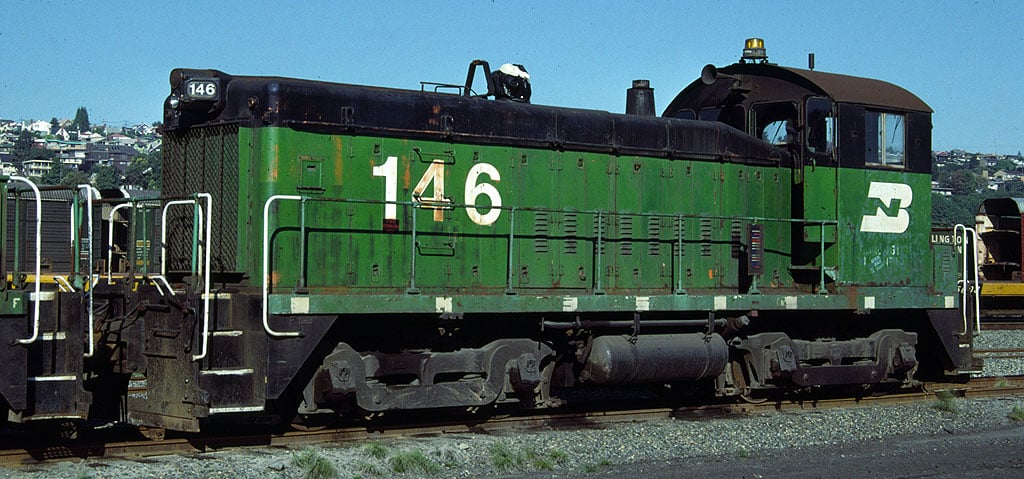
Burlington Northern SW9 146, seen in Seattle WA, is the former Great Northern 14, built by EMD’s Canadian subsidiary General Motors Diesel in London, Ontario. GMD built not only the SW9s sold to Canadian Railroads, but also some for GN (14-16) and C&O (5240-5244). Unlike the other American-built SW9s that these two roads owned, these eight switchers were very polite!
Craig Walker photograph
Visually, the SW9 has eight hood doors with louvers, with no gap and additional louvers above that (as on the SW7). And the battery box behind the cab has six louvers on each side, unlike the SW1200 which has only five! (How embarrassing for the SW1200!) The SW9 has a full-size radiator on the end of the long hood. The cab’s front windshields are rectangular. Inside the SW9 is a 567B 12-cylinder diesel engine, generating power to its four traction motors to provide 1,200 horsepower (895 kW). Beginning in October 1953, some SW9s were powered by a 567BC engine. And one of the last SW9s built, Weyerhaeuser 305, was equipped with a 567C engine, perhaps as a test for the subsequent SW1200.

Many railroads ordered their SW9s with Multimple Unit (MU) capability, allowing them to operate them in pairs (or more) for greater pulling power, as exemplified by the two St. Louis-San Francisco (Frisco) SW9s (310 and 313). To help the crews, the units were equipped with drop steps, in this case, the higher mount version, and end rails that allowed an opening in their center, either protected when not in use by a chain (as seen here) or a hinged pipe. The higher drop step mount also necessitated end rails that were angled up, as seen here.
Rick Conrath photograph, Paul de Luca collection
Variations on a Theme
Unlike so many road diesels, EMD’s end-cab switchers, such as the SW9 and TR5, did not feature a lot of variety “right out of the box:”
- Cab equipment doors
- Cab Sunshades – metal or canvas
- Footboards
- Trucks (AAR or Flexicoil)
- Fuel tank size
- Multiple Unit connections … or not
- Drop Steps for units intended for use on mainlines, in two heights (and with two variations of end rails to match)
- Headlight (single bulb headlight with a large circular reflector, or a twin sealed-beam headlight … each with small lighted numberboards on their sides
- Handrails: Corner handrails or full side handrails
- Numberboards:
- Great Northern (Burlington Northern) units had large 45º numberboards on the top of the end of the long hood
- Texas & New Orleans’ units had large 45º numberboards on the top of the center of the long hood
More variations appeared over time, often as locomotives were upgraded:
- Single bulb headlights converted to twin sealed-beam
- Spark arrestors
- Some, but not all, of the Santa Fe’s SW9s, have a unique hood-door style, with filtered cooling vent openings rather than louvers (admittedly, we’re unsure if these were built this way or modified by the railway)
- Radio Antennas
- Rebuilt handrails (essentially the corner handrails extended down the length of the locomotive)
- Beacons
- And, of course, a lot of other things that we don’t have room to list (or is it that we didn’t think of all of them?)
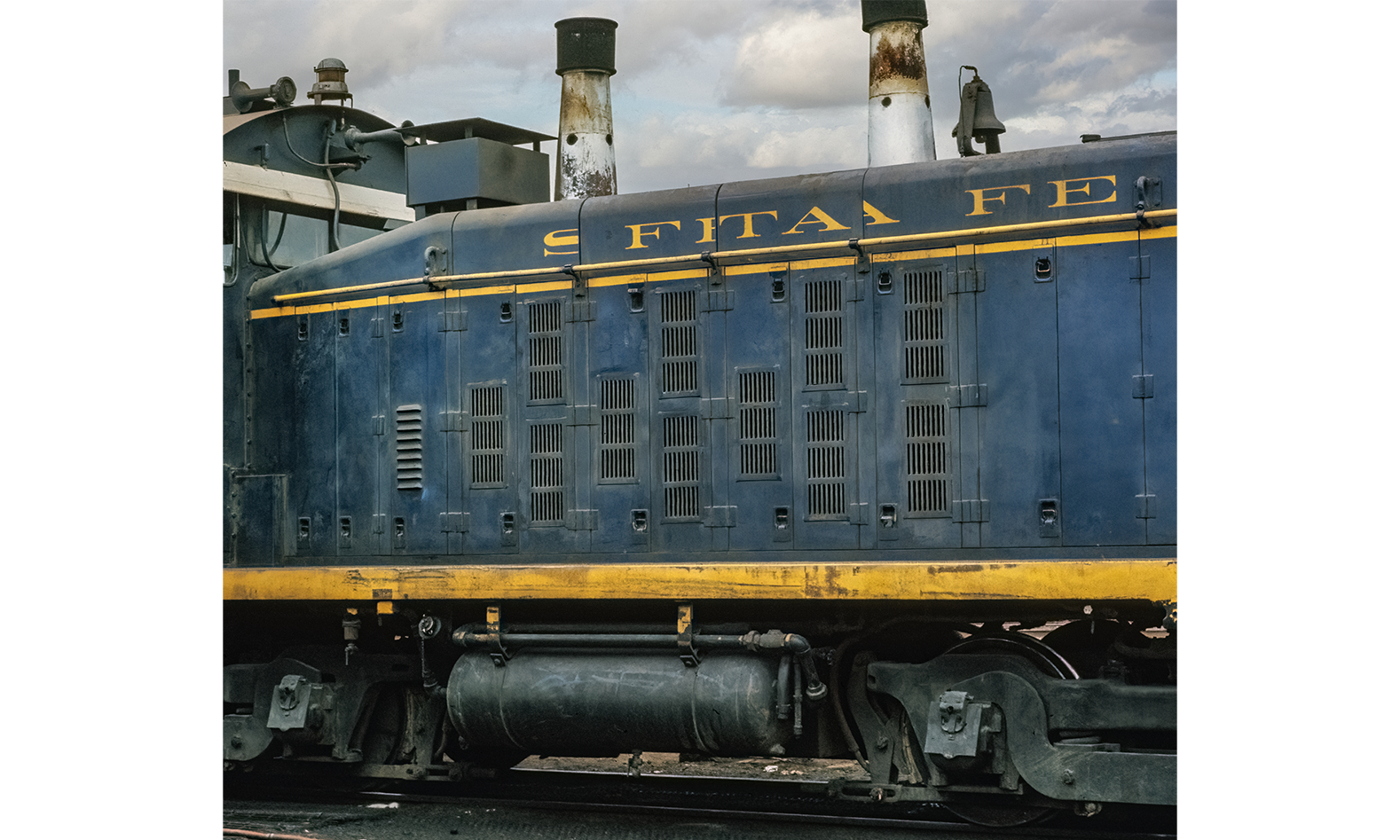
The alternate style of hood door cooling vents are shown here, on a Los Angeles-assigned SW9 (ATSF 2432). Note, too, the large radio antenna just ahead of the cab. Please ignore the … um … interesting roadname on this engine!
Craig Walker photograph
The Original Owners of the SW9 Were:
SW9:
- Aliquippa & Southern – 1200 (1 unit)
- Apalachicola Northern – 705-711 (7 units)
- Arkansas, Louisiana & Missouri – 12 (1 unit)
- Ashley Drew & Northern – 174 (1 unit)
- Atchison Topeka & Santa Fe – 2420-2438 (19 units)
- Atlantic Coast Line – 652-716 (65 units)
- Bellefonte Central – 5253 (1 unit)
- Boston & Maine – 1220-1231 (12 units)
- Baltimore & Ohio – 598-603 (6 units)
- Baltimore & Ohio Chicago Terminal Railroad – 590-597 (8 units)
- Bauxite & Northern – 10 (1 unit)
- Belt Railway of Chicago – 520-523 (4 units)
- Cambria & Indiana – 30-37 (8 units)
- Campbell’s Creek Coal – 13 (1 unit)
- Canadian National – 7000-7009 (10 units)
- Canadian Pacific – 7400-7405 (6 units)
- Central of Georgia – 301-310 (10 units)
- Central Railroad of New Jersey – 1084-1094 (11 units)
- Charleston & Western Carolina – 802-803 (2 units)
- Chattanooga Traction Company – 5 (1 unit)
- Chesapeake & Ohio – 5080-5093, 5240-5265 (40 units)
- Chicago & Illinois Western – 104 (1 unit)
- Chicago & North Western – 1101-1105, 1122-1125 (9 units)
- Chicago Burlington & Quincy – 9269-9270 (2 units)
- Chicago, West Pullman & Southern – 47-48 (2 units)
- Conemaugh & Black Lick – 118-119 (2 units)
- Delaware Lackawanna & Western – 551-560 (10 units)
- Detroit & Toledo Shore Line – 119-21 (3 units)
- Duluth Missabe & Iron Range – 11-25 (15 units)
- Erie – 434-440 (7 units)
- Florida East Coast – 221-228 (8 units)
- Georgia Railroad – 906-907 (2 units)
- Grand Truck Western – 7010-7016 (7 units)
- Great Lakes Steel – 27-29 (3 units)
- Great Northern – 14-23 (10 units)
- Great Western Railway of Colorado – 121-122 (2 units)
- Houston Belt & Terminal – 22-31 (10 units)
- Illinois Central – 9320-9334, 9430-9485 (70 units)
- Inspiration Consolidated Copper Company – 22-23 (2 units)
- Kansas City Southern – 1304 (1 units)
- Kirby Lumber Company – 1000 (1 unit)
- Kosmos Timber Company – 100 (1 unit)
- Lehigh Valley – 280-292 (13 units)
- Louisville & Nashville – 2277-2296 (20 units)
- Maine Central – 334-335 (2 units)
- Milwaukee Road – 1643-1645 (3 units)
- Mississippi Central – 201-210 (10 units)
- Missouri-Kansas-Texas – 1226-1235 (10 units)
- Missouri Pacific – 9170-9191 (22 units)
- Maryland & Pennsylvania – 82 (1 unit)
- Montour – 73-84 (12 units)
- Monessen Southwestern Railroad – 23-27 (4 units)
- Nashville, Chattanooga & St. Louis – 34-38 (5 units)
- New York Central – 8922-8930, 8941-8951, 8962-9008 (67 units)
- Nickel Plate Road – 233-244 (12 units)
- Northern Pacific – 115-118 (4 units)
- Oliver Iron Mining – 934-939 (6 units)
- Pennsylvania Railroad – 8513-8541, 8543-8544, 8859-8860, 8869-8870 (36 units)
- Peoria & Pekin Union – 411-412 (2 units)
- Philadelphia, Bethlehem & New England – 35-38 (4 units)
- Pittsburg & Shawmut – 231-239 (9 units)
- Pittsburgh & Lake Erie – 8931-8940. 8952-8961 (20)
- Pittsburgh, Chartiers & Youghiogheny – 2-5 (4 units)
- Rock Island – 775-779 (5 units)
- Republic Steel Company – 344 (1 unit)
- Reserve Mining Company – 1211 (1 unit)
- Saint Louis-San Francisco (Frisco) – 305-314 (10 units)
- Saint Louis Southwestern (Cotton Belt) – 1058-1061 (4 units)
- Spokane Portland & Seattle – 43-45 (3 units)
- Steelton & Highspire Railroad – 40-43 (4 units)
- Stelco – 70 (1 unit)
- Terminal Railroad Association of Saint Louis – 1206-1218 (13)
- Texas & New Orleans (Southern Pacific) – 108-112 (5)
- Texas & Pacific – 1024-1036 (13 units)
- Toronto Hamilton & Buffalo – 55-58 (4 units)
- Union Pacific – 1825-1866 (42 units)
- Union Railroad – 575-588 (14 units)
- Wabash – 363-374 (12 units)
- Western Pacific – 601-606 (6 units)
- Weyerhaeuser – 302-303, 305 (3 units)
- Wheeling Steel – 1253-1253 (2 units)
- Wisconsin Central (Soo Line) – 2111-2115, 2117-2119 (8 units)
Many of these locomotives were renumbered while in service for years. And, of course, many of the locomotives ended up working for other railroads, either through mergers or sales. These include, but are not limited to:
- Albany Port District
- Amtrak
- Archer-Midland-Daniels
- Arizona Eastern
- Austin & Northwestern
- Baltimore & Annapolis
- Bangor & Aroostook
- Burlington Junction
- Burlington Northern (merger of CB&Q, GN, NP, SP&S and, later, SLSF)
- Canadian Railserve
- Canton Railroad
- Carbon County Railway
- Cedar Rapids and Iowa City
- Chattahoochee Industrial
- Chicago Rail Link
- Chicago Short Line
- Conemaugh & Black Lick
- Conrail (merger of CNJ, EL, LV, PC)
- DeBruce Grain
- East Camden & Highland
- Elgin Joliet & Eastern (including a TR5B rebuilt with a cab)
- Erie Lackawanna (merger of DLW and ERIE)
- Everett Railroad
- Farmrail
- Great Southwest Railroad
- Lycoming Valley
- Minnesota Commercial
- Missouri Pacific (acquired TP)
- New York Central (acquired PLE)
- New York Susquehanna & Western
- Norfolk & Western (acquired WAB)
- Norfolk Southern (acquired NW)
- North Shore Railroad
- North Star Steel
- Ontario Southland
- Ouachita Railroad
- Pee Dee River
- Penn Central (merger of NYC and PRR)
- RELCo
- Salt Lake Garfield & western
- San Diego & Imperial Valley
- Seaboard Coast Line (merger of ACL and SAL)
- Seaboard System (merger of BO, CO, LN, SCL)
- Southern Pacific (acquired TNO)
- Southern Railway (acquired CG)
- Springfield Terminal (Guilford) (acquired BM)
- Tacoma Municipal Belt Line
- Texas Oklahoma & Eastern
- Union Pacific (acquired MP, MKT, WP)
- United States Steel
- Vandalia Railroad
- York Railway
- And, of course, many others…
While the Maryland & Pennsylvania purchased one SW9 (MPA 82), they later acquired others, such as 84 (albeit with York Rail reporting marks by the time of this 2011 sighting). This diesel was originally Pittsburgh & Lake Erie 8952, later renumbered PLE 1243 and, at some point, sold to MPA as their number 84. Besides the bell being AWOL, this SW9 has cooling coils on the sides of the air reservoirs and a small fuel tank. (We thought including this photo would please our own Cale Leiphart!)
Craig Walker photograph
Here's a Gallery of SW9 Photos … Enjoy!
(In Alphabetical Order Because I’m Just Not Feeling Very Random Today…)
Atlantic Coast Line SW9 681 is seen in 1964 in Birmingham, the greatest city in “Alabam” (according to the song). This locomotive was later part of the Seaboard Coast Line (numbered 163) when ACL and SAL merged. It was later sold to Illinois Steel Company (ISCX 163) and later still was part of leaser Webb Asset Management’s roster (as WAMX 913). ACL 681 has MU connectors and twin sealed-beam headlights.
Warren Calloway photograph

SW9s even found use with passenger operators, as exemplified by Amtrak 792 working Washington DC’s Ivy Yard, and one of several acquired by the carrier. AMTK “SW1000R” 792 (as AMTK called it) is the former Inland Steel Coal (INLX) 132, which was purchased from Youngstown & Southern (YS 73), built in May 1952 as Montour 73. This locomotive has full-lenth handrails.
Craig Walker photograph
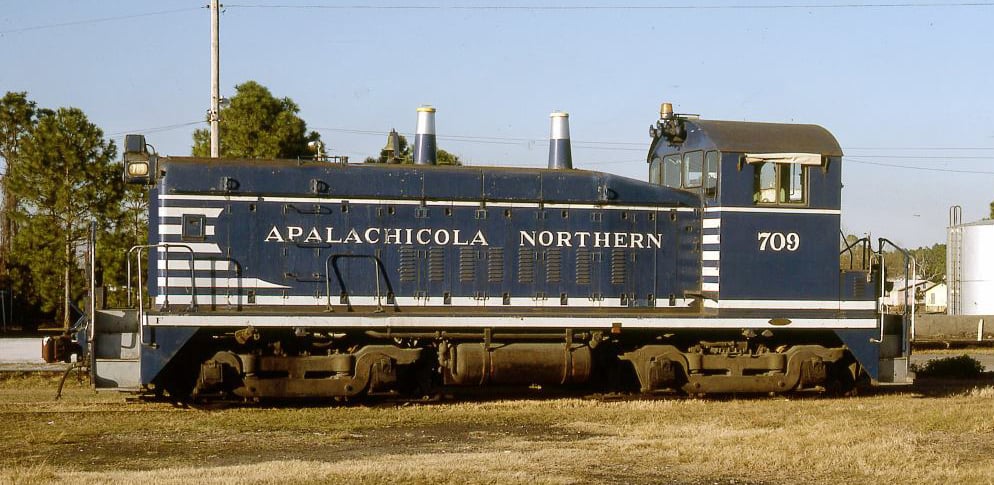
Florida’s Apalachicola Northern 709 was built for this shortline in December 1952, and is seen at the railroad’s Port St. Joe yard. Ignore that extra handrail sitting on the walkway, but do note the warning lights mounted above the twin sealed-beam headlights, as well as the drop steps.
Warren Calloway photograph
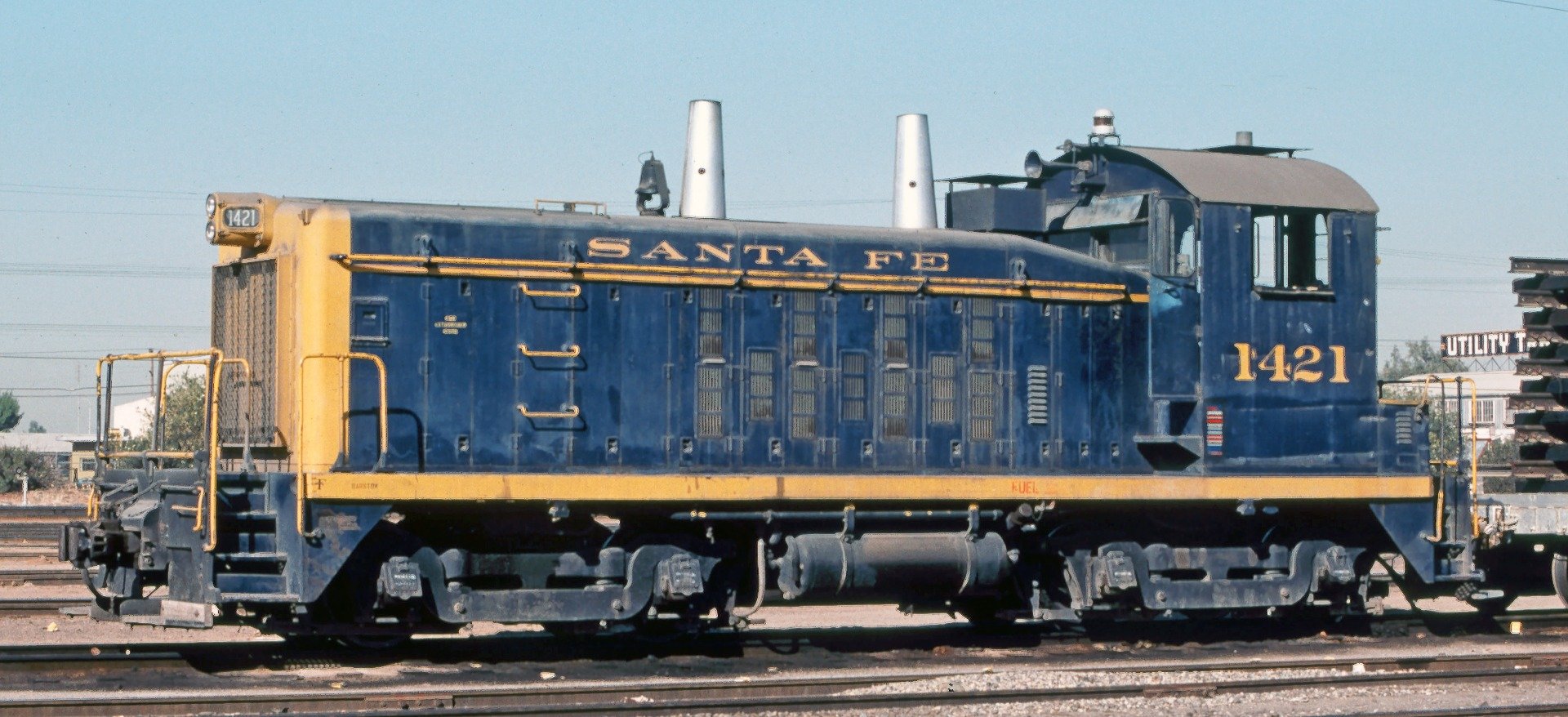
Atchison Topeka & Santa Fe SW9 1421, here working the railway’s Calwa Yard in Fresno CA, features the unusual hood doors some of the Santa Fe’s SW9s were equipped with. It also has a large boxy apparatus on the angled part of the hood, just ahead of the cab.
Ron Hawkins photograph
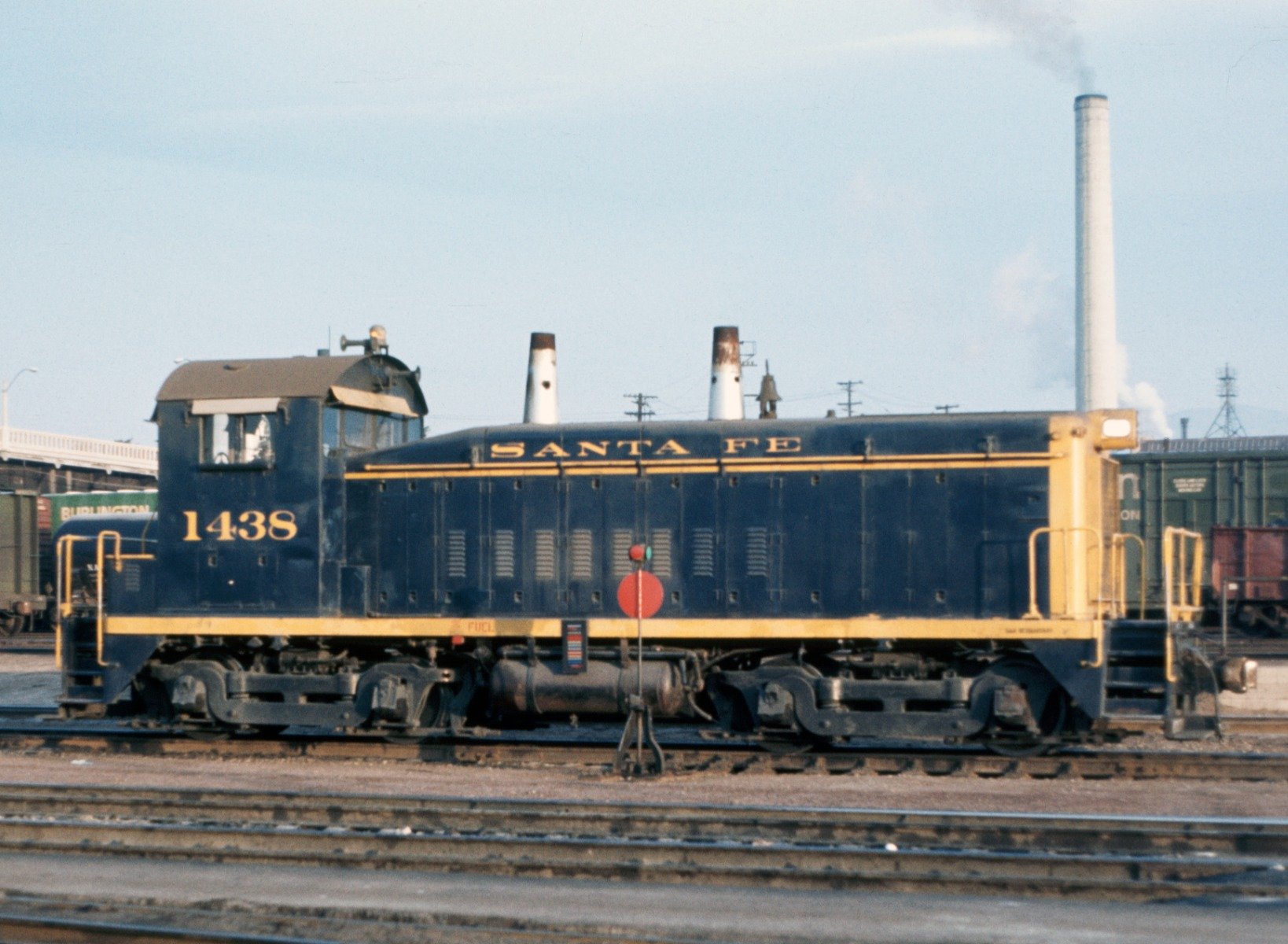
Atchison Topeka & Santa Fe SW9 1438, however, was equipped with the standard hood doors with louvers.
Ron Hawkins photograph
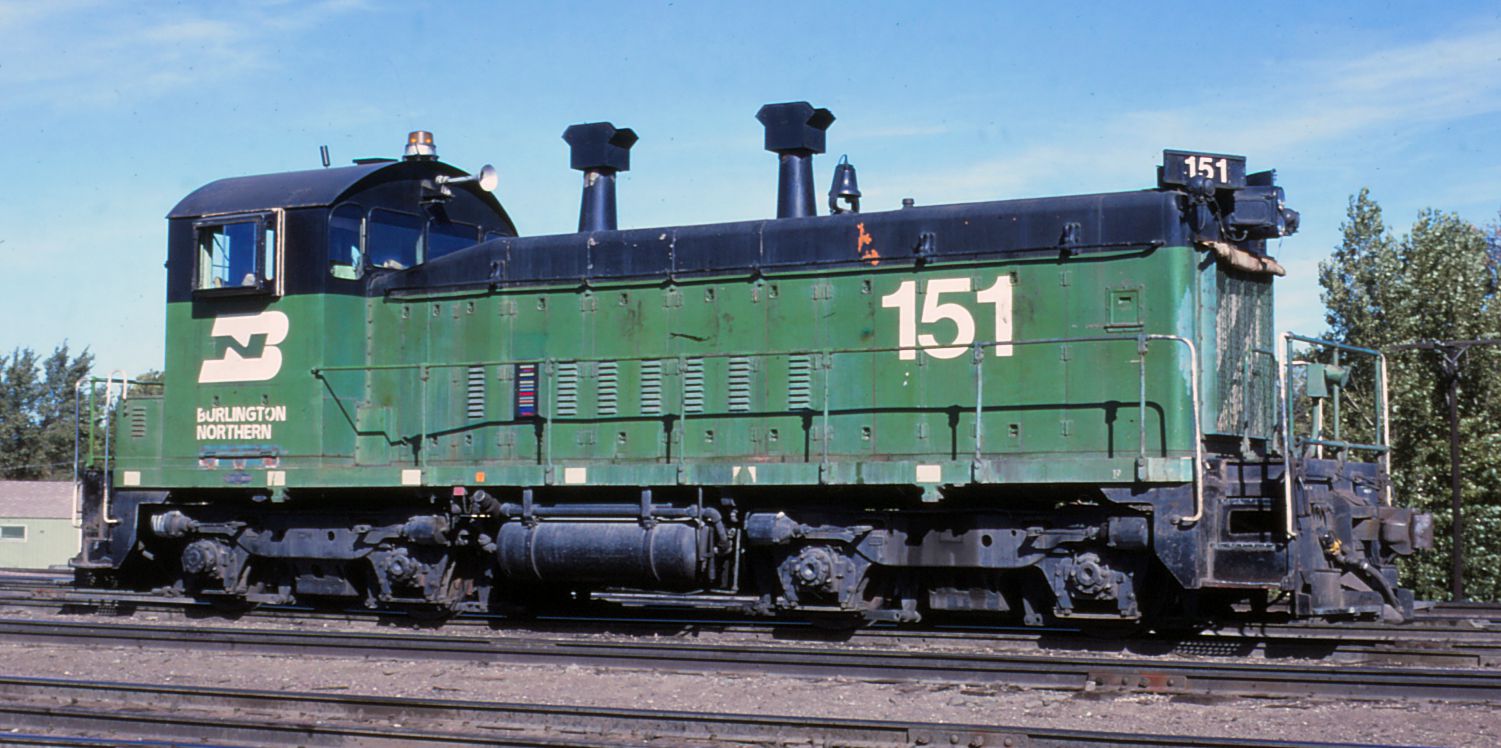
Burlington Northern SW9 151 displays the large front-mounted numberboards that predecessor Great Northern applied. It also has full-length handrails, spark arrestors and Flexicoil trucks. BN 151 is the former GN 19.
Ed Chapman collection
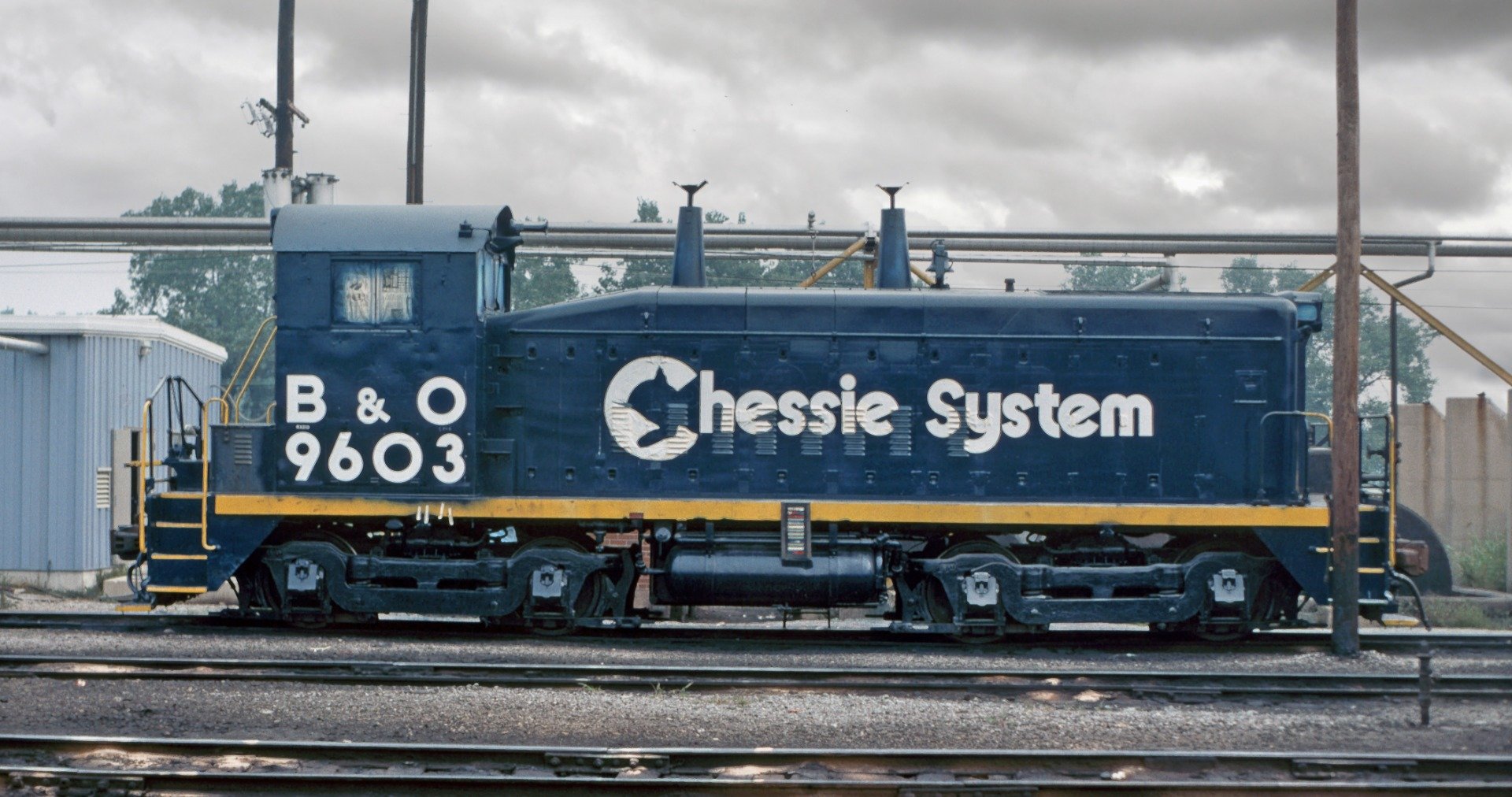
“Here’s something you don’t see every day, Chauncy.” “What’s that, Edgar?” If this Baltimore & Ohio/Chessie System SW9 looks unusual, it is primarily that its new Chessie paint has not yet been completely applied. However, It is a little unusual in the some of the masking is poorly applied: The ampersand is crooked, and the “S”s are all upside-down! C’mon, Dolton IL shop forces, you could do better! Every “S” is upside down? (At least when they make an error, they have some consistency!)
Ron Hawkins photograph
(Did anyone get the obscure “Chauncy and Edgar” reference? Or are you not an old codger like me?)

For the Belt Railway of Chicago, primarily a switching railroad in Chicagoland (which, c’mon, is a bit obvious given the railroad’s name!), SW9s were a fairly obvious choice for some new diesels in 1951. BRC 520, the “class engine,” was the first of four SW9s they acquired.
Ron Hawkins photograph
Another SW9 that has some lineage is Lycoming Valley 238, photographed switching cars in Williamsport PA. Built as Pittsburg & Shawmut 238, the PS later renumbered it 1816. It is a nice touch that the LVRR assigned it its original number – 238 – once again! As this was photographed in 2013, this SW9 has ditch lights.
Craig Walker photograph

Louisville & Nashville 2274, working in Atlanta GA in 1976, has high drop steps, but the standard height end rails. So, it appears that these drop steps may have been added by the L&N later. It also appears to have a Hancock Air Whistle (rather than an air horn), but without the typical shield normally found on them.
Lloyd Neal photograph, Craig Walker collection
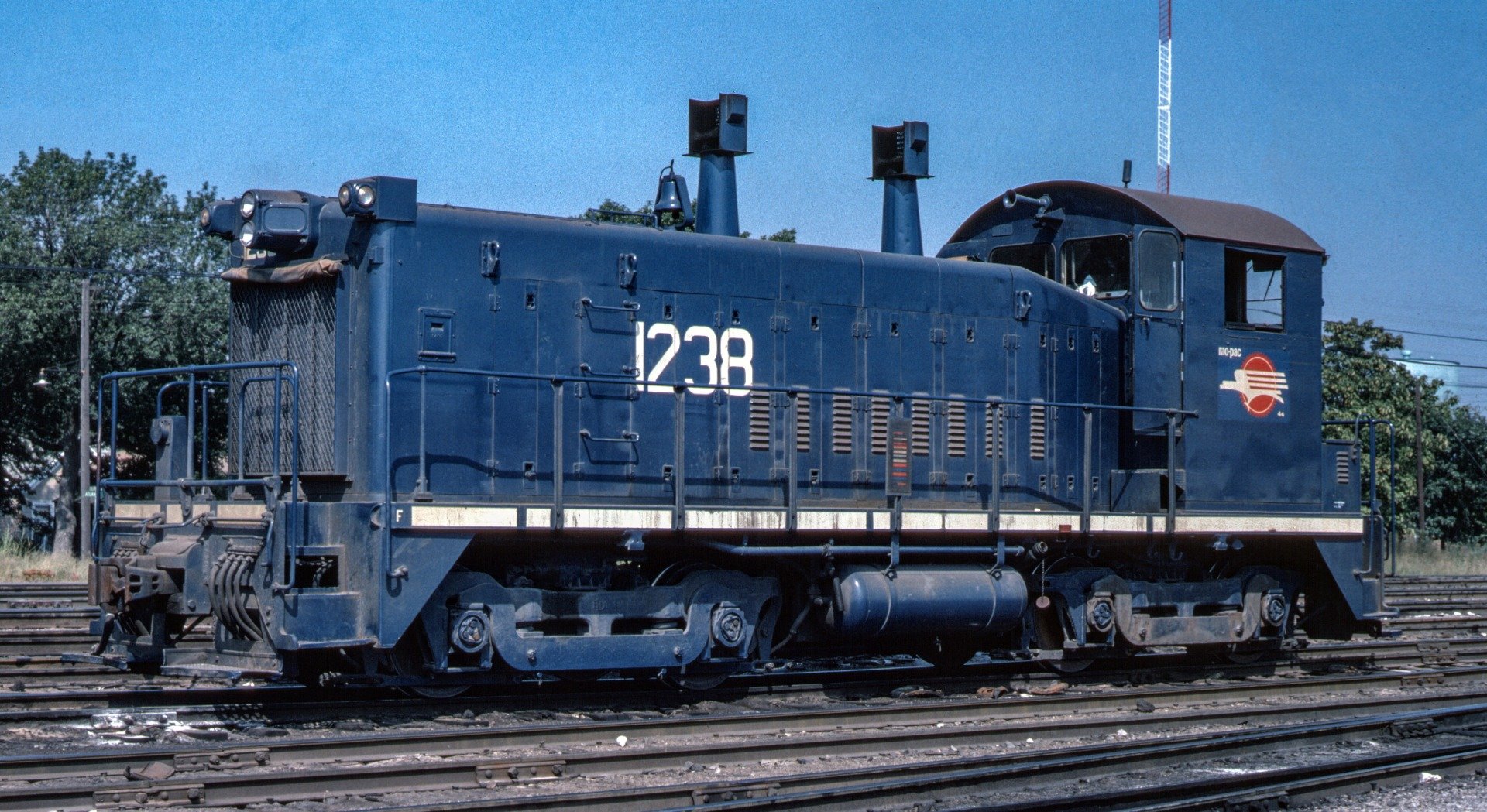
Missouri Pacific 1238 (originally MP 9176), found in Coffeyville KS in 1975, is a fairly generic SW9, but with full handrails on the sides and very impressive classification lights!
Ron Hawkins photograph
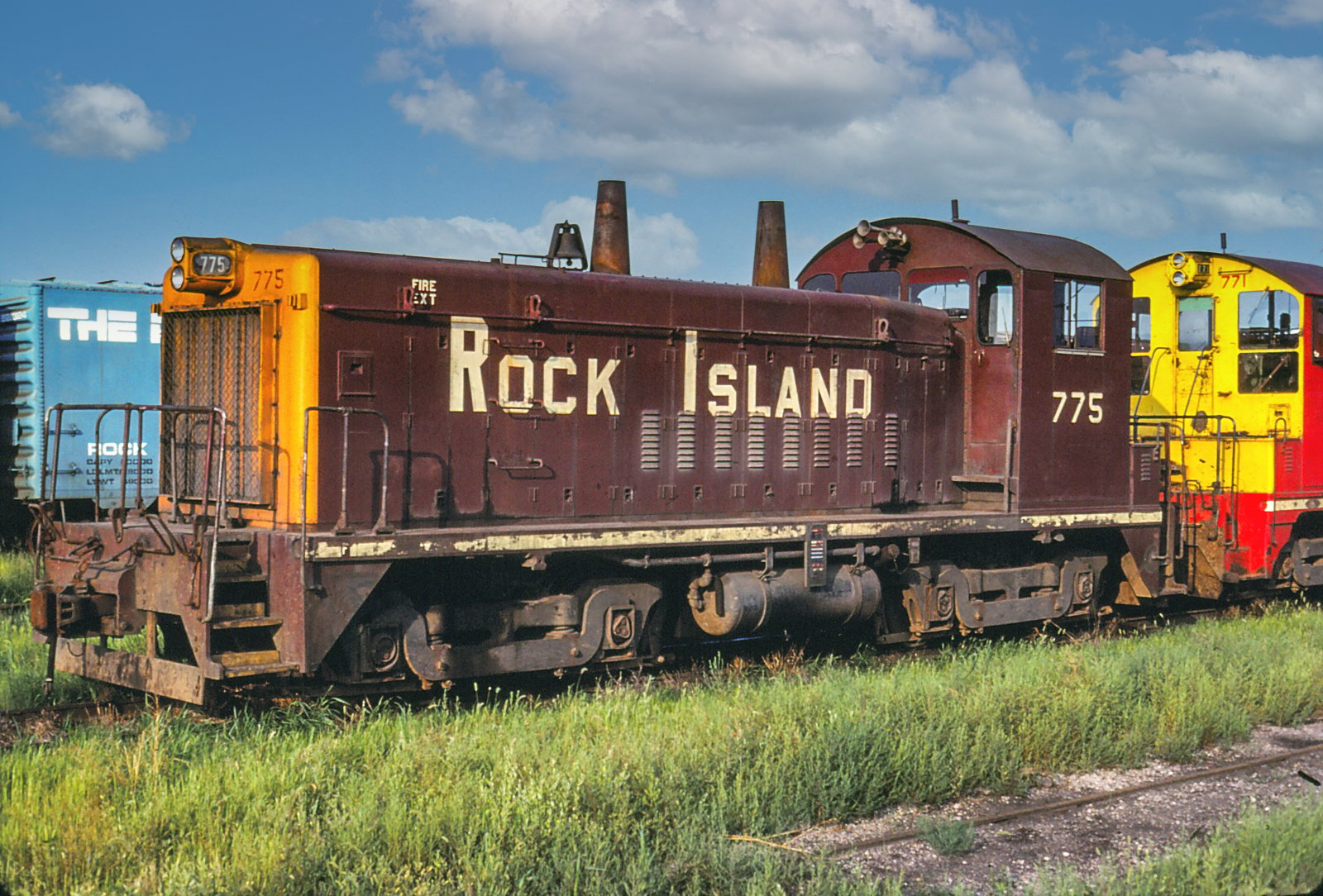
Rock Island 775, in Silvis IL, shows the end railings for units without drop steps rather clearly. And the bell is mounted at a 90º angle from most road’s bells.
Ed Chapman photograph
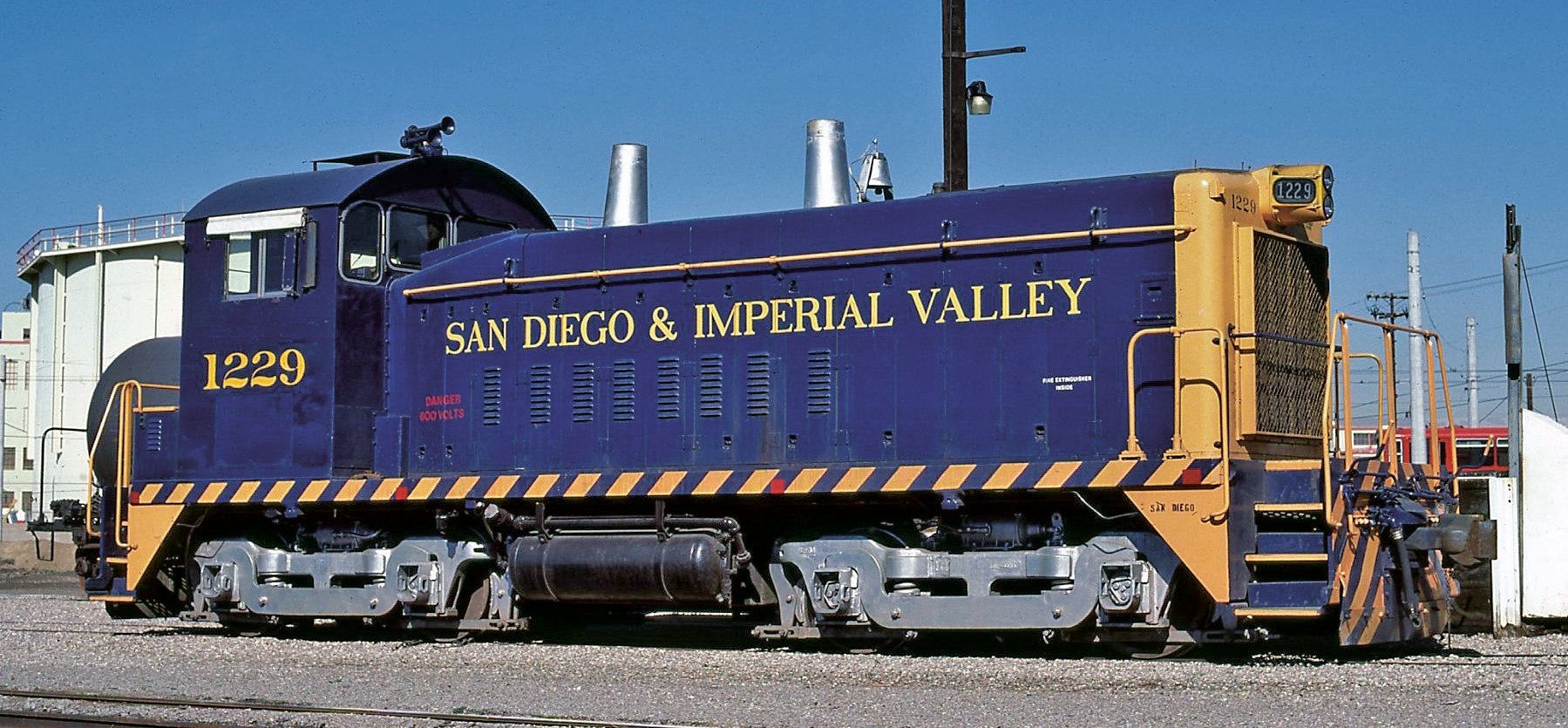
San Diego & Imperial Valley 1229 is a rebuilt SW9. Constructed for the Santa Fe as 2429, it was later renumbered ATSF 1429. In August 1974 it was rebuilt by the Santa Fe into an SSB1200, and numbered ATSF 1229, and eventually sold to the SD&IV. Note the angled apparatus on the tapered section of the hood.
Scott Rhodes photograph
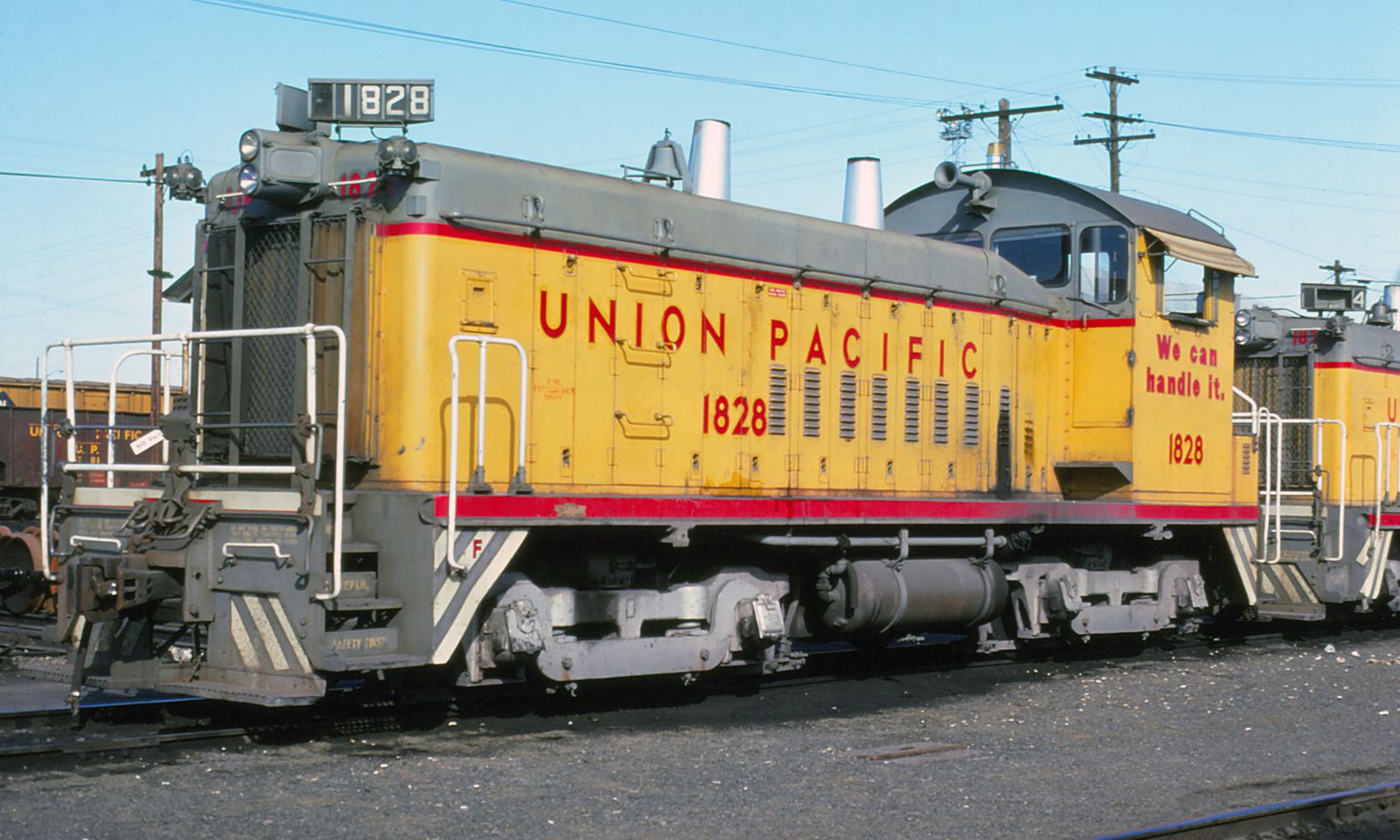
Another railroad that mounted angled numberboards on their switchers’ hood, at least for a while, was the Union Pacific. Working in Spokane WA in 1976 is UP SW9 1828, note the other unique details: Classic classification lights on the hood’s corners, and a pair of ladders mounted to the front of the hood, as well as the cab’s canvas sunshades.
Ed Chapman collection
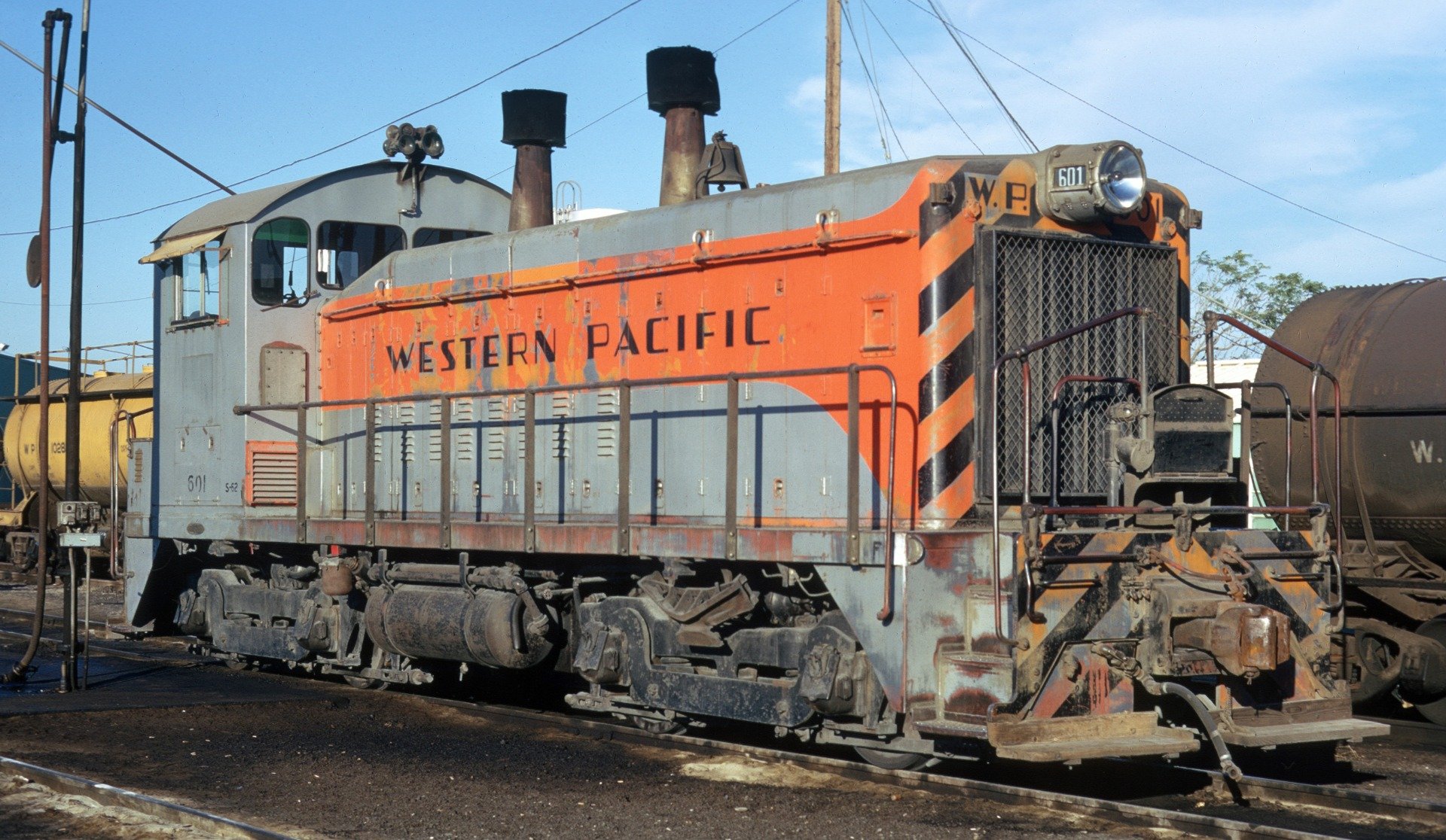
We’ll wrap things up with an SW9 from the late, great Western Pacific Railroad. Wearing the WP’s striking orange and silver scheme, WP 601 has poling pockets, a five-chime Nathan airhorn (!), a rerail frog, class light/marker light brackets and the classic single-bulb headlights. But by this time, in 1973, the enameled WP logo on the cab was missing. Perhaps it ended up in a railfan’s den…
Peter Arnold photograph
|
Thanks to Peter Arnold, Warren Calloway, Ed Chapman, Paul de Luca, John Eull, Ron Hawkins, Dale Martin, Leo J. Munson, Scott Rhodes and Douglas G. Walker for their assistance!
